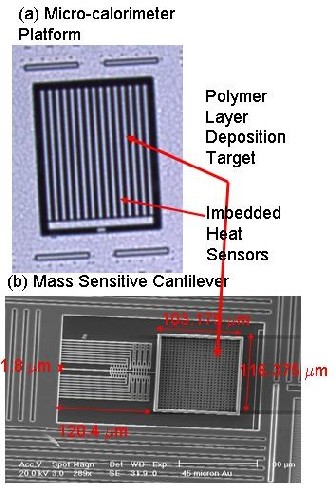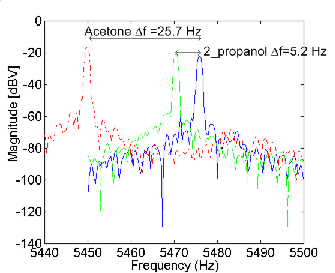
 |
|||||||
Gas Sensors Using CMOS MEMS |
|||||
|
Sarah Bedair Advisor: Gary Fedder |
 CMOS MEMS gas sensors  Micro-calorimeter gas exposure to toluene and isopropyl alcohol  Mass sensor frequency shifts due to acetone and 2-propanol exposures |
||||
|
Project: Chemical sensing research has been an expanding field for the past twenty years. There are many applications for chemical sensors such as chemistry, quality control, process applications in the food industry, and medical applications. Such applications include "electronic noses", gas sensing arrays, and "electronic tongues", which are liquid sensing arrays. Full on-chip integration using CMOS/microelectromechanical systems (MEMS) technology provides for viable means for such chemical sensing applications because of its inherent qualities that lead to device miniaturization, low power consumption, and complete system on chip for biomedical and chemical applications. Commercial CMOS chips in conjunction with a few mask-less micromachining steps provides a platform for chemically sensitive polymer application on MEMS transducers using ink-jet printing. These transducers exploit the change in the physical properties such as mass, resistance, and heat transfer of the sensitive layer upon absorption of a gas species. The current research explores the fabrication and implementation of a mass and heat sensitive gas detectors. Highlights:
|
|||||
|
overview | projects | people | publications | intranet | resources © 1998-2009 Carnegie Mellon |